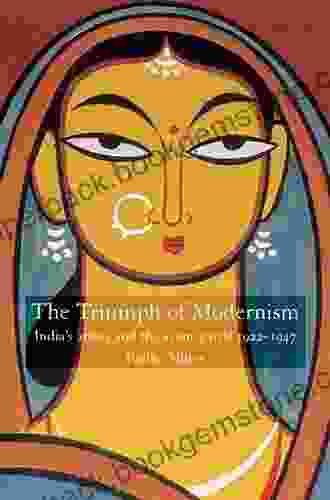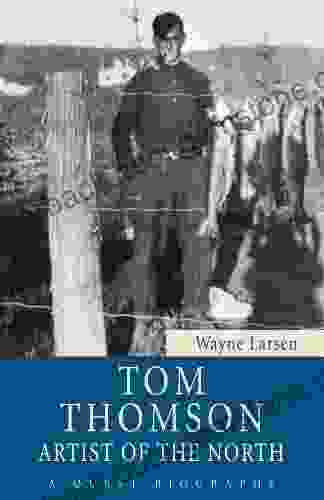Picking Coffee for the Revolution

Coffee is one of the world's most popular beverages, consumed by billions of people every day. But few of us stop to think about the journey that coffee beans take from the farm to our cup.
5 out of 5
| Language | : | English |
| File size | : | 4407 KB |
| Text-to-Speech | : | Enabled |
| Screen Reader | : | Supported |
| Enhanced typesetting | : | Enabled |
| Word Wise | : | Enabled |
| Print length | : | 276 pages |
| Lending | : | Enabled |
In this article, we will take a closer look at the coffee industry, from the fields where it is grown to the cups in which it is consumed. We will explore the challenges faced by coffee farmers, the impact of climate change, and the efforts to create a more sustainable and equitable coffee future.
The Coffee Belt
Coffee is grown in a narrow band around the equator known as the "coffee belt." This area includes parts of Africa, Asia, and Latin America.
The coffee belt is characterized by its warm climate, high humidity, and abundant rainfall. These conditions are ideal for growing coffee trees, which are native to the Ethiopian highlands.
Coffee Production
Coffee production is a labor-intensive process. Coffee trees take several years to mature, and they must be carefully tended to produce high-quality beans.
The first step in coffee production is to plant the coffee trees. The trees are typically planted in rows, and they must be spaced far enough apart to allow for proper growth and air circulation.
Once the trees are planted, they must be watered and fertilized regularly. They also need to be pruned to encourage healthy growth and fruit production.
After three to four years, the coffee trees will begin to produce fruit. The fruit of the coffee tree is called a coffee cherry. Coffee cherries are small, round berries that contain two coffee beans each.
The coffee cherries are typically harvested by hand. The pickers carefully select ripe cherries and place them in baskets or bags.
Once the cherries have been harvested, they are processed to remove the beans. The processing method varies depending on the desired flavor profile of the coffee.
The most common processing method is called "washed processing." In this method, the cherries are pulped to remove the skin and pulp. The beans are then fermented and washed to remove any remaining pulp or debris.
After the beans have been processed, they are dried in the sun or in a machine. The drying process can take several weeks.
Once the beans are dry, they are sorted and graded. The beans are then roasted and ground to create the coffee that we drink.
Challenges Faced by Coffee Farmers
Coffee farmers face a number of challenges, including:
- Climate change: Climate change is a major threat to coffee production. Rising temperatures and changes in precipitation patterns are making it more difficult to grow coffee in many areas.
- Pests and diseases: Coffee trees are susceptible to a number of pests and diseases. These pests and diseases can damage the trees and reduce yields.
- Economic instability: The coffee industry is subject to volatile prices. This can make it difficult for coffee farmers to earn a decent living.
- Lack of access to credit: Many coffee farmers lack access to credit, which can make it difficult to invest in their farms and improve their productivity.
Efforts to Create a More Sustainable and Equitable Coffee Future
There are a number of efforts underway to create a more sustainable and equitable coffee future. These efforts include:
- Climate-smart agriculture: Climate-smart agriculture practices can help coffee farmers adapt to climate change and reduce their environmental impact. These practices include using drought-tolerant coffee varieties, planting trees to provide shade for coffee trees, and using organic fertilizers.
- Fair trade: Fair trade is a system of certification that ensures that coffee farmers are paid a fair price for their beans. Fair trade coffee also supports sustainable farming practices.
- Direct trade: Direct trade is a system of purchasing coffee that eliminates the middleman. This allows coffee farmers to earn a higher price for their beans and build relationships with consumers.
Coffee is a complex and fascinating commodity. The journey that coffee beans take from the farm to our cup is a long and arduous one. But it is a journey that is made possible by the hard work of coffee farmers around the world.
By supporting sustainable and equitable coffee practices, we can help to create a better future for coffee farmers and ensure that we can continue to enjoy our favorite beverage for generations to come.
5 out of 5
| Language | : | English |
| File size | : | 4407 KB |
| Text-to-Speech | : | Enabled |
| Screen Reader | : | Supported |
| Enhanced typesetting | : | Enabled |
| Word Wise | : | Enabled |
| Print length | : | 276 pages |
| Lending | : | Enabled |
Do you want to contribute by writing guest posts on this blog?
Please contact us and send us a resume of previous articles that you have written.
 Best Book
Best Book Page Flip
Page Flip Bookshelf
Bookshelf Literary loom
Literary loom Chapter
Chapter Bookish
Bookish PageTurner
PageTurner Bibliophile
Bibliophile Story
Story Inkwell
Inkwell Bookworm
Bookworm Labyrinth
Labyrinth Plot Twist
Plot Twist Prose
Prose Paperback
Paperback Storyteller
Storyteller Sanctuary
Sanctuary Fiction
Fiction Reading
Reading Chronicle
Chronicle Read
Read Nefertiti Austin
Nefertiti Austin Brad Taylor
Brad Taylor Behrouz Boochani
Behrouz Boochani Dave Hill
Dave Hill Monica Walters
Monica Walters Tove Ditlevsen
Tove Ditlevsen Jason Sperb
Jason Sperb Barbara A Parish
Barbara A Parish Betsy Whyte
Betsy Whyte Deborah Forman
Deborah Forman Eliot Greenspan
Eliot Greenspan Elisabeth Stevens
Elisabeth Stevens Gabrielle Hamilton
Gabrielle Hamilton D A Miller
D A Miller Becky Chambers
Becky Chambers Keith Houston
Keith Houston Veda Austin
Veda Austin Michael Haag
Michael Haag Nancy Kress
Nancy Kress Mario Rizzi
Mario Rizzi David V Jervis
David V Jervis Mark Crilley
Mark Crilley Marty Noble
Marty Noble Barbara Demick
Barbara Demick Koloman Moser
Koloman Moser Bart King
Bart King Erica Davies
Erica Davies Pam Flowers
Pam Flowers Barbie Scott
Barbie Scott Ben Strand
Ben Strand Nick Petrie
Nick Petrie Barrington Barber
Barrington Barber Barbara Casey
Barbara Casey Toni Ann Johnson
Toni Ann Johnson Tya Marie
Tya Marie Bonnie Barker
Bonnie Barker Wesley Jones
Wesley Jones Jessica Marting
Jessica Marting Michael Doyle
Michael Doyle Silvia Marina Arrom
Silvia Marina Arrom Jon Contino
Jon Contino Nelson Demille
Nelson Demille Zora O Neill
Zora O Neill Lesley Downer
Lesley Downer Rohan M Vider
Rohan M Vider Chevonne Clarke Bryan
Chevonne Clarke Bryan Wilkie Collins
Wilkie Collins Robert Muirhead
Robert Muirhead J Dominique
J Dominique Peter Inglis
Peter Inglis Michael Mammay
Michael Mammay Paraluman S Aspillera
Paraluman S Aspillera Sarah Mirk
Sarah Mirk Marie Beardmore
Marie Beardmore Bette Howland
Bette Howland Charlise Lyles
Charlise Lyles Sergio Toppi
Sergio Toppi Nikki Turner
Nikki Turner Dori Jones Yang
Dori Jones Yang Robert Crais
Robert Crais Bill Winner
Bill Winner Harvey Arden
Harvey Arden F Scott Fitzgerald
F Scott Fitzgerald Sara Boccaccini Meadows
Sara Boccaccini Meadows Leon Smith
Leon Smith Jay Armstrong
Jay Armstrong Jordan Marie
Jordan Marie Charles Sturt
Charles Sturt Charlotte Fiell
Charlotte Fiell Barbara Totaro
Barbara Totaro S L Rowland
S L Rowland Sarah Hepola
Sarah Hepola Ebony Diamonds
Ebony Diamonds Carol Sulcoski
Carol Sulcoski Talia Hibbert
Talia Hibbert Kolbie Blume
Kolbie Blume Stephen Haff
Stephen Haff Lucy Jane Bledsoe
Lucy Jane Bledsoe Rebecca Sugar
Rebecca Sugar Kathy Mckeon
Kathy Mckeon Briana Wiles
Briana Wiles Peter Ustinov
Peter Ustinov Tiana Laveen
Tiana Laveen Jennie Smallenbroek
Jennie Smallenbroek Basilius Besler
Basilius Besler Terese Marie Mailhot
Terese Marie Mailhot Kristen Dutkiewicz
Kristen Dutkiewicz Barbara Hambly
Barbara Hambly Harmon Cooper
Harmon Cooper Daniel Rachel
Daniel Rachel Collins Dictionaries
Collins Dictionaries Clifford D Simak
Clifford D Simak James Haddock
James Haddock Noel Riley Fitch
Noel Riley Fitch Elisabeth Elliot
Elisabeth Elliot Robert Henderson
Robert Henderson Robert Roskind
Robert Roskind Barbara Bradley
Barbara Bradley Jennifer Wilson
Jennifer Wilson Barbara Grizzuti Harrison
Barbara Grizzuti Harrison Bandana Ojha
Bandana Ojha Staci Swider
Staci Swider Bob Leszczak
Bob Leszczak Gavin Maxwell
Gavin Maxwell Bella Martin
Bella Martin Loring M Danforth
Loring M Danforth Matthew Brehm
Matthew Brehm Elissa Washuta
Elissa Washuta Eva Tulene Watt
Eva Tulene Watt Lena Corwin
Lena Corwin Jacinda Townsend
Jacinda Townsend J C Sum
J C Sum Louis Wain
Louis Wain Joseph Lanza
Joseph Lanza Terry Pratchett
Terry Pratchett Lucy Adlington
Lucy Adlington Tessa Miller
Tessa Miller Christopher Butler
Christopher Butler Rita Benn
Rita Benn Bill H Myers
Bill H Myers David E Lowe
David E Lowe Theda Perdue
Theda Perdue Emily Spivack
Emily Spivack Barry Sonnenfeld
Barry Sonnenfeld Sarah Birnbach
Sarah Birnbach Stephanie Claytor
Stephanie Claytor Ian Nathan
Ian Nathan Michael Chatfield
Michael Chatfield Stephen C Baldwin
Stephen C Baldwin Carol Huber Cypher
Carol Huber Cypher John E Siers
John E Siers Blake Farha
Blake Farha Yiyun Li
Yiyun Li Joan Reardon
Joan Reardon Benjamin John Coleman
Benjamin John Coleman Ulysses S Grant
Ulysses S Grant Mark Tufo
Mark Tufo Steve Ryfle
Steve Ryfle Linda Nochlin
Linda Nochlin Barbara Chase Riboud
Barbara Chase Riboud Benjamin E Wise
Benjamin E Wise Betsy Prioleau
Betsy Prioleau Individual Way
Individual Way C J Boyle
C J Boyle Jenna Fischer
Jenna Fischer Bill Bryson
Bill Bryson Ken Browar
Ken Browar Esmeralda Santiago
Esmeralda Santiago Mackenzie Phillips
Mackenzie Phillips Benjamin Lewin
Benjamin Lewin Ben Eastham
Ben Eastham Spencer Shaw
Spencer Shaw Ernst Rettelbusch
Ernst Rettelbusch Michael Shaara
Michael Shaara Rexford Govorchin
Rexford Govorchin George Schindler
George Schindler Hal Erickson
Hal Erickson Donald N Thompson
Donald N Thompson Susan Herrmann Loomis
Susan Herrmann Loomis Keith Doyle
Keith Doyle Charles A Perrone
Charles A Perrone Laney Salisbury
Laney Salisbury Robert Morkot
Robert Morkot Paula Kamen
Paula Kamen Michael J Hayde
Michael J Hayde Tony Horwitz
Tony Horwitz Becky Gilhespie
Becky Gilhespie Ashley Jaquavis
Ashley Jaquavis Norman Lee
Norman Lee Khadijah J
Khadijah J Barbara Lewis
Barbara Lewis Ben Corbett
Ben Corbett D L Harrison
D L Harrison Gary Wasserman
Gary Wasserman Linda Lael Miller
Linda Lael Miller Brent Eviston
Brent Eviston Lorraine De Meaux
Lorraine De Meaux James Goddard
James Goddard Matthew J Milliner
Matthew J Milliner Margaret Kessler
Margaret Kessler Sophia Rolle
Sophia Rolle Lonely Planet
Lonely Planet Betsy Dillard Stroud
Betsy Dillard Stroud Darrel Rees
Darrel Rees Ruth Silvestre
Ruth Silvestre Wendy Tait
Wendy Tait William Alexander
William Alexander Alan O Brien
Alan O Brien James Grady
James Grady Jan V White
Jan V White Bac Hoai Tran
Bac Hoai Tran Partha Mitter
Partha Mitter Cornelius C Kubler
Cornelius C Kubler Steve Berry
Steve Berry Barbara Raue
Barbara Raue Katja Petrowskaja
Katja Petrowskaja Yvonne Blackwood
Yvonne Blackwood Jonathan Strahan
Jonathan Strahan Bob Dow
Bob Dow Nolan Clark
Nolan Clark Benjamin Hochman
Benjamin Hochman Douglas Brooke Wheelton Sladen
Douglas Brooke Wheelton Sladen Tim Powers
Tim Powers Jennifer Sewing
Jennifer Sewing Michael Anderle
Michael Anderle Diane Duane
Diane Duane Paul S Leland
Paul S Leland Grace Berry
Grace Berry Faye Kellerman
Faye Kellerman Stanislaw Lem
Stanislaw Lem David Fisher
David Fisher William A Kappele
William A Kappele John G Breslin
John G Breslin Steven Campbell
Steven Campbell Saxon Andrew
Saxon Andrew Yoshitaka Amano
Yoshitaka Amano Beverly Jenkins
Beverly Jenkins Suzette Riddick
Suzette Riddick Thomas S Hischak
Thomas S Hischak Brad Bussie
Brad Bussie Wassily Kandinsky
Wassily Kandinsky Kyle Froman
Kyle Froman Laura Furman
Laura Furman Beth Tondreau
Beth Tondreau Joan Williams
Joan Williams Beau Riffenburgh
Beau Riffenburgh Tracey Lange
Tracey Lange Deanne Stillman
Deanne Stillman Momoyo Nishimura
Momoyo Nishimura Bill Lee
Bill Lee Elaine A Clark
Elaine A Clark Dennis E Taylor
Dennis E Taylor Orestes Lorenzo
Orestes Lorenzo Interweave Editors
Interweave Editors Maurice Samuels
Maurice Samuels Benjamin Drake
Benjamin Drake Bj Wane
Bj Wane Jamie Davis
Jamie Davis Lynne Anne Blom
Lynne Anne Blom Jack Finney
Jack Finney Dave Hickey
Dave Hickey Bruce Hanington
Bruce Hanington John Seed
John Seed Umm Zakiyyah
Umm Zakiyyah Brian Burke
Brian Burke Josephine B Pasquarello
Josephine B Pasquarello Dean A Kowalski
Dean A Kowalski Boris Mihailovic
Boris Mihailovic Tom Wilson
Tom Wilson Tony Burton
Tony Burton Samuel Peralta
Samuel Peralta William Ellis
William Ellis Barbara Miller
Barbara Miller Jamie Carter
Jamie Carter Bob Herbert
Bob Herbert Eddie Chambers
Eddie Chambers Marvin Patchen
Marvin Patchen David Airey
David Airey Bill Bensley
Bill Bensley Barney Nelson
Barney Nelson Poppy Evans
Poppy Evans Ben D Over
Ben D Over Milind Mulick
Milind Mulick Vanessa Zoltan
Vanessa Zoltan Debbie Rose Myers
Debbie Rose Myers Olive Yong
Olive Yong Terry Compton
Terry Compton Nathalie Kalbach
Nathalie Kalbach Matthew Morgante
Matthew Morgante Claude Lanzmann
Claude Lanzmann Ella Frances Sanders
Ella Frances Sanders Seymour Morris Jr
Seymour Morris Jr Becky Stephen
Becky Stephen Lucinda Fleeson
Lucinda Fleeson Richard Sorger
Richard Sorger John Mulholland
John Mulholland Tim W Jackson
Tim W Jackson Jonathan C Slaght
Jonathan C Slaght Dan Dietz
Dan Dietz Joseph M Henninger
Joseph M Henninger Laurent Bolard
Laurent Bolard Stephen Boss
Stephen Boss Micah Ian Wright
Micah Ian Wright James S A Corey
James S A Corey Lisa Congdon
Lisa Congdon Denis Dutton
Denis Dutton Sir Richard Francis Burton
Sir Richard Francis Burton Tim Stokes
Tim Stokes Michael Winter
Michael Winter Hayao Miyazaki
Hayao Miyazaki Stuart D Paine
Stuart D Paine Philip Guston
Philip Guston Fania E Davis
Fania E Davis Ben Coes
Ben Coes Lowell Angell
Lowell Angell Barbara Davis
Barbara Davis Ilan Stavans
Ilan Stavans Doug Risner
Doug Risner Jenny Mckay
Jenny Mckay Mateo Askaripour
Mateo Askaripour Bayard Taylor
Bayard Taylor Hakeem M Oluseyi
Hakeem M Oluseyi Betsy Beier
Betsy Beier Beatrice Sonders
Beatrice Sonders Bob Drury
Bob Drury Blaise Corvin
Blaise Corvin Chris Nashawaty
Chris Nashawaty Stewart M Green
Stewart M Green Patrick Symmes
Patrick Symmes Tom Sito
Tom Sito Jodi Staniunas Hopper
Jodi Staniunas Hopper Bella Blair
Bella Blair Theo Farrington
Theo Farrington Mary Brave Bird
Mary Brave Bird Bonny Snowdon
Bonny Snowdon Ben Box
Ben Box Jonathan Waterman
Jonathan Waterman Ian Chilvers
Ian Chilvers Baby Professor
Baby Professor Maxime J Durand
Maxime J Durand Leanne Kitchen
Leanne Kitchen C Pierce Salguero
C Pierce Salguero Rosemary Kimani
Rosemary Kimani Paul Kendall
Paul Kendall Mike Curato
Mike Curato Mitche Graf
Mitche Graf Saul Tanpepper
Saul Tanpepper Dana Fox
Dana Fox John H Vanderpoel
John H Vanderpoel Maggie Ramsay
Maggie Ramsay Jpinsiders
Jpinsiders Lexi Sundell
Lexi Sundell Tershia Lambrechts
Tershia Lambrechts Fiona Peart
Fiona Peart Zachary Leader
Zachary Leader Greg O Brien
Greg O Brien Elena Gorokhova
Elena Gorokhova Bill Plympton
Bill Plympton Greg Mitchell
Greg Mitchell Ben J Harris
Ben J Harris Hillary Jordan
Hillary Jordan Valerie L Winslow
Valerie L Winslow Shanora Williams
Shanora Williams Lori Wilde
Lori Wilde Benj Pasek
Benj Pasek George Lopez
George Lopez Tammy Ruggles
Tammy Ruggles Joanne Hutchinson
Joanne Hutchinson Ea Hooper
Ea Hooper Eric Gibson
Eric Gibson Barry Kirwan
Barry Kirwan Kayla Arora
Kayla Arora Ben Shahn
Ben Shahn Barack Obama
Barack Obama William Black
William Black Ruth Superhal
Ruth Superhal Russell Foureagles
Russell Foureagles Malala Yousafzai
Malala Yousafzai David Byrne
David Byrne John Scarne
John Scarne Matthew Luzi
Matthew Luzi Eric Rauchway
Eric Rauchway Bob Martin
Bob Martin Lynne Olson
Lynne Olson Helmut Kopka
Helmut Kopka Simon Turney
Simon Turney Sophie Cunningham
Sophie Cunningham Bernth Lindfors
Bernth Lindfors Tom Wiener
Tom Wiener Blair Howard
Blair Howard Edward Gibbon
Edward Gibbon Charlie Jane Anders
Charlie Jane Anders Katie Dowe
Katie Dowe Bella Young
Bella Young Chris Roel
Chris Roel Sheila Montilla
Sheila Montilla Philip B Meggs
Philip B Meggs Joseph Doddridge
Joseph Doddridge Betty Halbreich
Betty Halbreich Iris Murdoch
Iris Murdoch Wayne Moniz
Wayne Moniz Jules Verne
Jules Verne Bassey Ikpi
Bassey Ikpi Billie Holiday
Billie Holiday Glynn Stewart
Glynn Stewart Jessie Knadler
Jessie Knadler Leo Buijs
Leo Buijs Diane Tuckman
Diane Tuckman Bil Donovan
Bil Donovan Bich Minh Nguyen
Bich Minh Nguyen Bethany C Morrow
Bethany C Morrow Florencia E Mallon
Florencia E Mallon Robert E Hampson
Robert E Hampson Noret Flood
Noret Flood Marina Warner
Marina Warner Tyler Perry
Tyler Perry Edward White
Edward White Gerri Leen
Gerri Leen Baoshu
Baoshu Ceidrik Heward
Ceidrik Heward Blakely Little
Blakely Little Tim Rangnow
Tim Rangnow Ibl Press
Ibl Press Betty Dooley Awbrey
Betty Dooley Awbrey Lucee Joie
Lucee Joie Stuart Williams
Stuart Williams Jonathan Lopez
Jonathan Lopez Philip Ball
Philip Ball Ben Hannam
Ben Hannam Barry Lord
Barry Lord Hope Hart
Hope Hart Bernice Lerner
Bernice Lerner Bebe Harper
Bebe Harper Ravyn Wilde
Ravyn Wilde Kao Kalia Yang
Kao Kalia Yang Steve Huston
Steve Huston Yahrah St John
Yahrah St John Roman Mars
Roman Mars Tiana Bighorse
Tiana Bighorse Jeremy Dronfield
Jeremy Dronfield Melissa Rivers
Melissa Rivers Joseph Heywood
Joseph Heywood Ruby Dixon
Ruby Dixon Phoebe Robinson
Phoebe Robinson John Howard Griffin
John Howard Griffin Bob Dennard
Bob Dennard Thomas P Stafford
Thomas P Stafford Gabrielle Euvino
Gabrielle Euvino William Lidwell
William Lidwell Eric Henze
Eric Henze John Ruskin
John Ruskin George H Gisser
George H Gisser Beebe Bahrami
Beebe Bahrami Wayne Larsen
Wayne Larsen Gillian Gloyer
Gillian Gloyer Laura Ling
Laura Ling Matt Smith
Matt Smith Maggie Craft
Maggie Craft Bev Sellars
Bev Sellars John Muir
John Muir Zongyan Hu
Zongyan Hu Helen Thorpe
Helen Thorpe Taylor Jenkins Reid
Taylor Jenkins Reid Mary Peters
Mary Peters Larissa Pham
Larissa Pham Stephen Mills
Stephen Mills Robin Cormack
Robin Cormack Bley Hack
Bley Hack Billie Rae Bates
Billie Rae Bates Conn Iggulden
Conn Iggulden Kerry Bogert
Kerry Bogert Beryl Markham
Beryl Markham Merl Code
Merl Code Jane L Rosen
Jane L Rosen Deirdre Slattery
Deirdre Slattery Ottessa Moshfegh
Ottessa Moshfegh Ellen Tomaszewski
Ellen Tomaszewski Ian Mcdonald
Ian Mcdonald Bob Elliott
Bob Elliott Tim Rayborn
Tim Rayborn Sejal Shah
Sejal Shah Bill Arnott
Bill Arnott Shane Mitchell
Shane Mitchell Ben Street
Ben Street Shirtaloon
Shirtaloon Mary Matsuda Gruenewald
Mary Matsuda Gruenewald Beverly J Armento
Beverly J Armento David Elliot Cohen
David Elliot Cohen Birgit O Connor
Birgit O Connor Dan Moren
Dan Moren Jane Pek
Jane Pek Dalili
Dalili Bernice L Mcfadden
Bernice L Mcfadden Shoko Tendo
Shoko Tendo Robert Lanz
Robert Lanz Justin Woolley
Justin Woolley Colin Falconer
Colin Falconer James Joyce
James Joyce Marie Killilea
Marie Killilea Dean Koontz
Dean Koontz James Ulyatt
James Ulyatt Sandra Duran Wilson
Sandra Duran Wilson Rainer Maria Rilke
Rainer Maria Rilke Mariana Atencio
Mariana Atencio Terry Lee Stone
Terry Lee Stone Laurie Gough
Laurie Gough Brad Lee
Brad Lee Ros Per
Ros Per Bobby Brown
Bobby Brown Basil Johnston
Basil Johnston Chad Zunker
Chad Zunker B V Larson
B V Larson Lauren Meisner
Lauren Meisner Michael Wise
Michael Wise Richard L Leza Sr
Richard L Leza Sr Phillip Maisel
Phillip Maisel Bonny Pierce Lhotka
Bonny Pierce Lhotka Ian J Malone
Ian J Malone Bet Borgeson
Bet Borgeson Bengie Molina
Bengie Molina Bill Cotter
Bill Cotter Bianca Del Rio
Bianca Del Rio Barbara Delinsky
Barbara Delinsky Bolu Babalola
Bolu Babalola Helen Hoang
Helen Hoang Diane Gensler
Diane Gensler Bob Normand
Bob Normand Mary Lou Andre
Mary Lou Andre Barry Herniman
Barry Herniman J P Telotte
J P Telotte Hildegarde Mahoney
Hildegarde Mahoney Kenya Hunt
Kenya Hunt Brandon Varnell
Brandon Varnell Tori Rodriguez
Tori Rodriguez Maura Spiegel
Maura Spiegel Patricia Sands
Patricia Sands Catherine Ryan Hyde
Catherine Ryan Hyde Shing Schih
Shing Schih Kevin Hart
Kevin Hart Barry Moser
Barry Moser
Light bulbAdvertise smarter! Our strategic ad space ensures maximum exposure. Reserve your spot today!

 David MitchellUnveiling the Story of Jewish Experience in Mississippi: A Comprehensive...
David MitchellUnveiling the Story of Jewish Experience in Mississippi: A Comprehensive... Evan SimmonsFollow ·9k
Evan SimmonsFollow ·9k Adrian WardFollow ·8.7k
Adrian WardFollow ·8.7k Norman ButlerFollow ·6.2k
Norman ButlerFollow ·6.2k Langston HughesFollow ·2.6k
Langston HughesFollow ·2.6k Vince HayesFollow ·12k
Vince HayesFollow ·12k Ralph EllisonFollow ·15.5k
Ralph EllisonFollow ·15.5k Casey BellFollow ·10.1k
Casey BellFollow ·10.1k Colin RichardsonFollow ·3.9k
Colin RichardsonFollow ·3.9k

 Bryan Gray
Bryan GrayThe Second Generation: Voices of the Holocaust
The Holocaust was one of the most horrific...

 Douglas Foster
Douglas FosterWalking the Fields of the Newfoundland Dead
In the heart of the rolling countryside of...

 Henry James
Henry JamesThe Unsanctioned Asset: A Gripping Thriller Set in a...
In the realm of espionage thrillers, The...

 Devon Mitchell
Devon MitchellPainting En Plein Air: Capturing the Essence of Nature on...
Painting en plein air, or painting...

 Damon Hayes
Damon HayesThe Life and Times of Dene Residential School Survivor
Residential schools...

 Steve Carter
Steve CarterIndia Artists and the Avant Garde: 1922-1947
The term "avant-garde" is...
5 out of 5
| Language | : | English |
| File size | : | 4407 KB |
| Text-to-Speech | : | Enabled |
| Screen Reader | : | Supported |
| Enhanced typesetting | : | Enabled |
| Word Wise | : | Enabled |
| Print length | : | 276 pages |
| Lending | : | Enabled |










